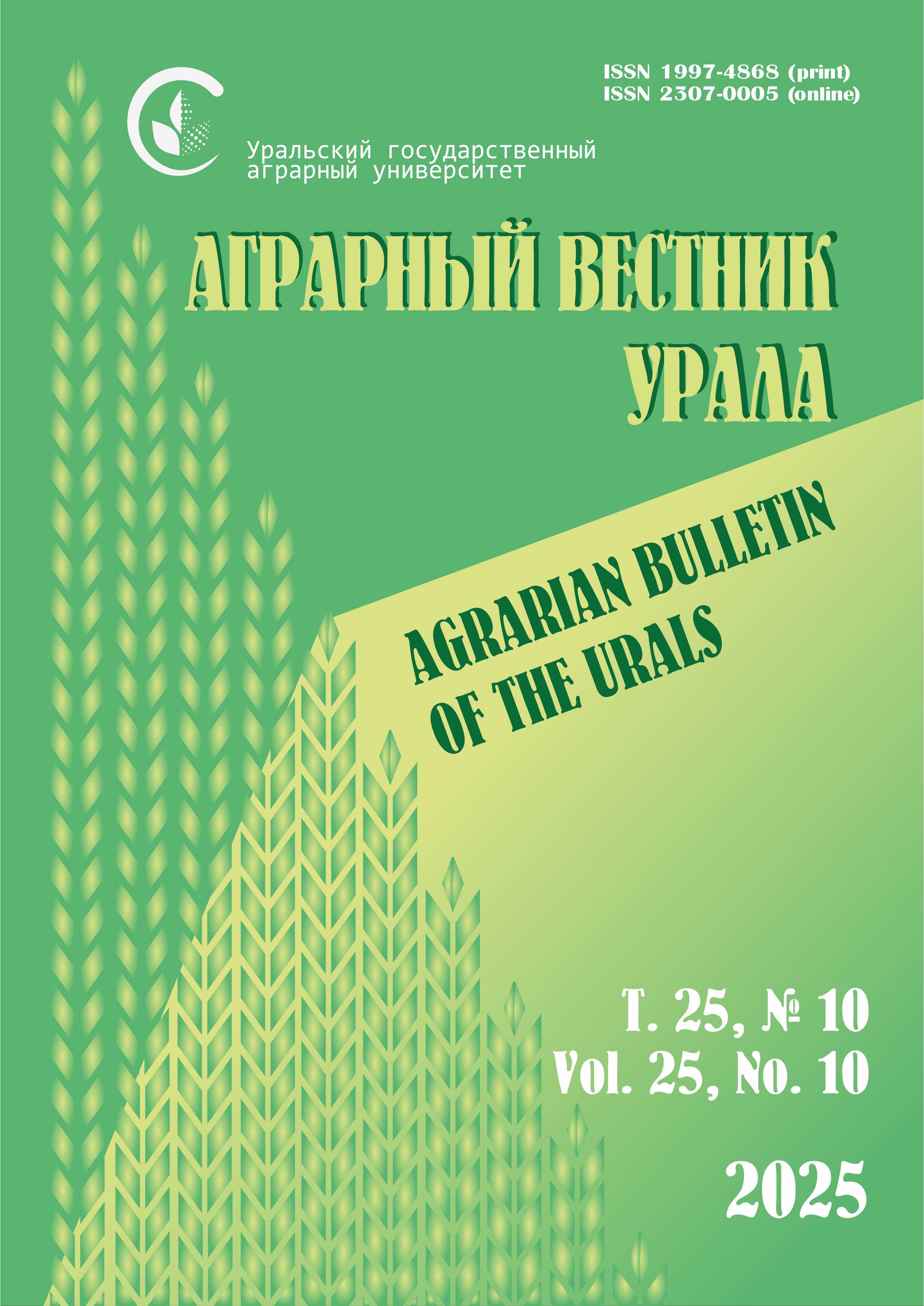Authors:
S. S. Aleksandrova, A. A. Bakharev, A. P. Duktov, N. A. Sadomov
Research Institute of Agriculture of the Northern Trans-Urals – a branch of the Tyumen Scientific Center of the Siberian Branch of the Russian Academy of Sciences, Moskovskiy, Russia
State Agrarian University of the Northern Trans-Urals, Tyumen, Russia
Belarussian State Agricultural Academy, Gorki, Republic of Belarus
E-mail: Этот адрес электронной почты защищён от спам-ботов. У вас должен быть включен JavaScript для просмотра.
Abstract. Research objective was to study the intestinal microbiocenosis in broiler chickens. Laboratory test was conducted at Research and Development Center for Agriculture of the North-Western Branch of Tyumen Research Center of SB RAS. Methods. Cobb 500 chickens breed was used. The main part of experiment began at the age of 14 days. By this time, chickens had reached an average body weight of 365 grams. The control group of chickens was fed basic diet, consisting of total mixed ration fodder and pure water. Chickens of the 1st experimental group during the main stage of experiment were fed with “Vetom 2” probiotic additive in drinking water at 50 mg / 1 kg of poultry weight, whereas chickens of the 2nd experimental group were fed “Lactobifadol” added to their fodder at the rate of 0.2 g per 1 kg of poultry weight. Research results have showed that prior to feeding probiotic formulations no pathogenic microflora was observed in the microbiocenosis of the droppings of broiler chickens. Conditionally pathogenic bacteria, such as Proteus mirabilis, Klebsiella oxytoca, Klebsiella pneumoniae, Staphylococcus aureus were present. Bacillis spp. was present in all of the samples. After feeding the formulations, no pathogenic microflora was detected in the droppings of chickens in experiment groups. Conditionally pathogenic bacteria Proteus mirabilis were present in the droppings of control group chickens, the 1st experimental group, 2nd experimental group. Concentrations of Bifidobacteria and Lactobacteria in chickens’ droppings fed with “Lactobifadol” were significantly higher than in the rest of the groups. Bacillus spp. was present in all samples of the 1st experimental group fed with “Vetom 2”. It was also present in the droppings of chickens in other groups. Scientific novelty. Laboratory experiment involving broiler chickens aimed at researching intestinal microbiocenosis and its effect on digestibility of mixed fodder was conducted in Northern Trans-Urals conditions for the first time.
Keywords: broiler chickens, Vetom, Lactobifadol, intestinal microbiocenosis, digestibility coefficients.
For citation: Aleksandrova S. S., Bakharev A. A., Duktov A. P., Sadomov N. A. Intestinal microbiocenosis and fodder digestibility in broiler chickens when using probiotics // Agrarian Bulletin of the Urals. 2023. No. 02 (231). Pp. 53‒61. DOI: 10.32417/1997-4868-2023-231-02-53-61.
Download the full text of the article












